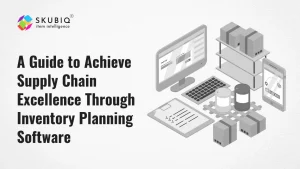In the fast-paced world of logistics and supply chain management, efficiency is the key to success. As businesses strive to meet the ever-growing demands of customers, warehouse management becomes a critical aspect of the entire operation. One of the key components in achieving efficiency in warehouse operations is the implementation of employee management systems.
Employee management systems, also known as workforce management tools, have revolutionized the way warehouses operate by providing comprehensive solutions for managing staff, tasks, and inventory. These systems go beyond traditional methods and embrace technology to optimize every aspect of warehouse operations.
The Role of Employee Task Management System in Warehouses
One of the critical components of employee management systems is the employee task management system. This feature allows warehouse managers to assign tasks to specific employees, track their progress in real-time, and ensure that deadlines are met. This not only improves the overall efficiency of the workforce but also provides a transparent view of the tasks at hand.
For example, in a large warehouse where numerous tasks are being performed simultaneously, an employee task management system helps prioritize activities, allocate resources efficiently, and reduce the risk of bottlenecks. This ensures that every employee is working on tasks that contribute to the overall goals of the warehouse.
What is the remedy for effective management of warehouse employees?
The correlation is clear: the more time a warehouse manager dedicates to the floor, the higher the productivity and efficacy of the warehouse. To achieve this, warehouse managers need the capability to monitor and address issues in real-time, armed with a swift and robust problem-solving strategy. A warehouse manager immersed in outdated processes, manual functions, and ineffective tools risks being diverted from where their presence is most crucial.
For businesses lacking a hands-on warehouse manager or the means to actualize this scenario, a cascade of problems may arise:
1. Wavering Client Satisfaction
Client satisfaction is a pivotal metric reflecting the effectiveness of employee management. Client feedback and retention serve as barometers for gauging whether the employed management techniques and tools are aiding or hindering the business.
2. Incorrect Orders, Damaged Goods, Delays, and Human Errors
These factors impact the bottom line through returns, loss of business, and damage to the business’s reputation.
3. Employee Complement Imbalance
The number of employees should align with the actual demand, preventing issues like downtime, decreased productivity, theft, and inadequate task management.
4. Reduced Employee Engagement
Engaging with employees is foundational for an effective and productive workforce. Without tools for on-the-floor interaction, monitoring, coaching, and rewarding become challenging.
5. Ineffective Task Management and Work Tracking
Consistent allocation and management of tasks are vital for reducing downtime and enhancing overall productivity. A lack of scheduling and monitoring capability may result in frequent errors.
6. Sub-optimal Inventory Management
Effective inventory management is critical, influencing day-to-day tasks. Unmanaged inventory contributes to employee inefficiency. Warehouse management plays a key role in addressing and optimizing these issues.
7. Employee Downtime and Lack of Productivity
Smooth progression of orders through the warehouse is vital. Any hurdles in processes can lead to employee downtime, emphasizing the need for on-site managerial presence.
8. Theft and Losses
An unmonitored warehouse increases the risk of theft and losses. Identifying root causes and implementing solutions requires heightened managerial visibility.
To enable warehouse managers to be both present and engaged while overseeing higher-level warehouse operations, a comprehensive solution is imperative. Implementing a Warehouse Management System (WMS) that facilitates real-time monitoring, task management, and performance tracking becomes the linchpin for effective warehouse employee management.
The Impact of Warehouse Tracking System on Inventory Management
Warehouse tracking systems play a crucial role in enhancing inventory management within a warehouse. These systems utilize technologies such as RFID (Radio-Frequency Identification) and barcode scanning to provide real-time visibility into the movement and location of inventory items. When integrated into an overall employee management system, warehouse tracking systems contribute to a more accurate and efficient inventory management process.
Imagine a scenario where a warehouse is equipped with a state-of-the-art warehouse management system that includes a robust warehouse tracking system. As soon as a shipment arrives, the system automatically updates the inventory records, allocates storage space, and notifies the relevant employees about the new stock. This level of automation not only reduces the chances of errors but also speeds up the entire inventory management process.
Optimizing Warehouse Employee Management through a Management System
TIn optimizing warehouse operations, a Warehouse Management System (WMS) plays a crucial role in efficiently managing warehouse employees. Enabling your warehouse manager to actively participate on the warehouse floor necessitates the implementation of a WMS that facilitates seamless access to crucial warehouse data, order information, outgoing product details, and inventory specifics directly from the warehouse floor. Additionally, it should provide valuable insights into performance metrics, delivery status, and target achievements.
The mobility of your warehouse manager is paramount, and your chosen WMS should embody the following functionalities:
Systematic Recording of Employee Interactions: The WMS should empower your warehouse manager to systematically record and track active interactions with employees, capturing observations and performance measurements for comprehensive personnel management.
Work Overview by Wave, Job Function, and Task/Activity: A robust WMS should offer a detailed overview of warehouse operations, categorizing work by wave, job function, and task/activity. This categorization enhances the warehouse manager’s ability to understand and manage ongoing tasks efficiently.
Task Management Capabilities: Your WMS should include features for effective task management, allowing the warehouse manager to put tasks on hold, re-prioritize them, assign tasks to specific employees, or release sets of tasks to be completed. This ensures flexibility and adaptability in response to dynamic operational needs.
Real-time Monitoring, Planning, and Forecasting: The WMS should enable real-time monitoring, planning, and forecasting of warehouse activities, providing your warehouse manager with the tools to make informed decisions promptly.
Customer-Specific Status Tracking: The WMS should facilitate the tracking of status for a particular customer, offering functionalities such as order lookups and wave progress tracking. This ensures heightened customer-centricity and responsiveness in warehouse operations.
Conclusion
In the dynamic world of warehouse management, where precision and speed are paramount, employee management systems have become indispensable tools for success. From improving workforce efficiency to enhancing inventory accuracy, these systems play a pivotal role in streamlining warehouse operations.
As technology continues to advance, we can expect even more innovative features and functionalities to be integrated into employee management tools. The future of warehouse management lies in the hands of businesses that embrace these technologies, allowing them to stay ahead in an ever-evolving industry.




